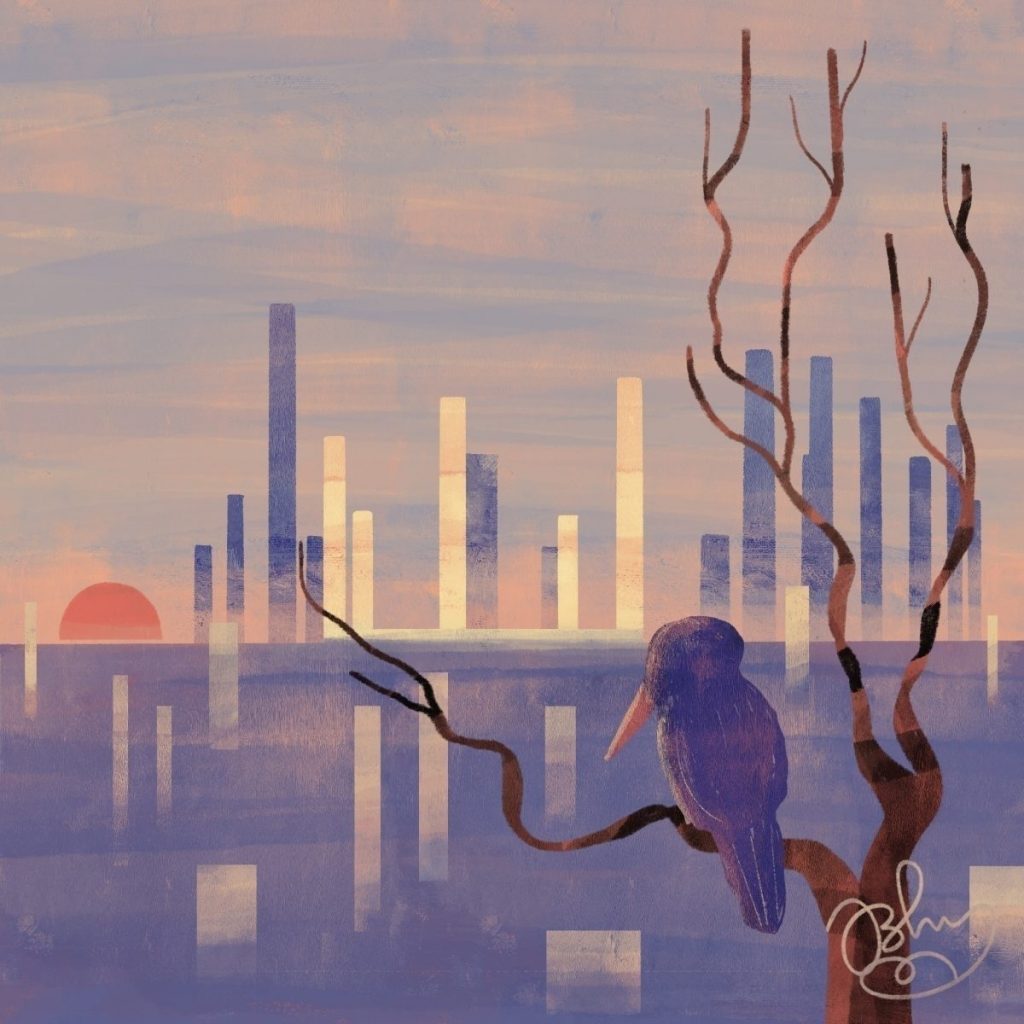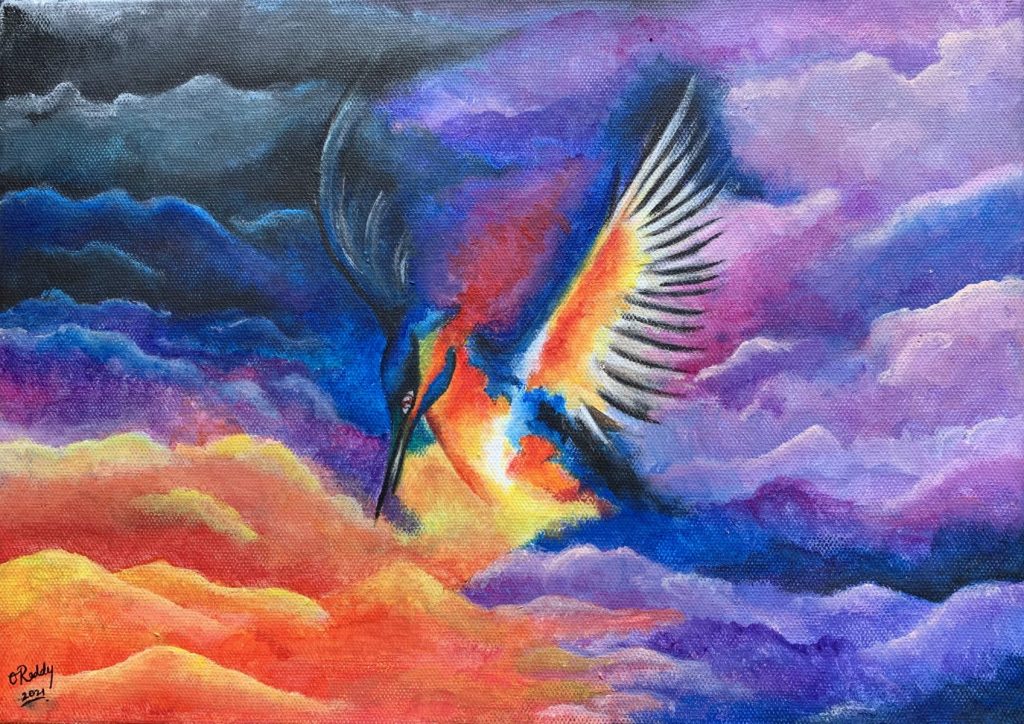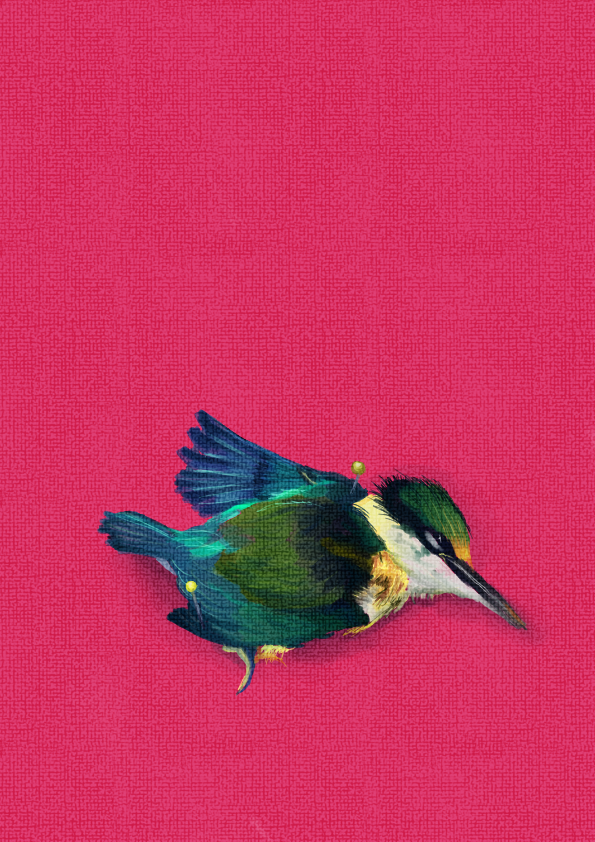Nus Creative Writing
By Clara Che Wei Peh and Tee Zhuo
(2,500 words, 10-minute read)
In August, the National University of Singapore (NUS) announced unilaterally that Yale-NUS College would be shut down by 2025, marking what many see as a premature end to the partnership between Yale University and NUS that started in 2011. The months since have seen an outpouring of grief, anger, and resistance against the decision to close the liberal arts college, from the Yale-NUS community and far beyond.
Speculations have been rife about the reasons behind the closure, fuelled by an absence of valid or even contradictory answers from NUS, and in turn countered by an impassioned war of words waged across the nation's newspapers. A month has passed, and yet, much remains unanswered, beyond the plans to "merge" Yale-NUS with the existing University Scholars Programme in NUS to create a "new college".
Much ink and tears have been spilled about the unjustness of the decision, and how it has affected thousands of students , staff, faculty and alumni . Criticism has also been made about how this closure would affect Singapore's reputation for openness, and reduce diversity in Singapore's higher education landscape.
Of the many letters, statements, articles, and petitions, however, one category of resistance has received less than its deserved share of public attention: art.
Watercolours of blue and orange, colours representing Yale-NUS, blended together in the likeness of a kingfisher, the school's mascot. Poems thick with the sadness of death and loss, prose speaking of crushed hopes and dreams.

As the sun slowly sets by Ishmam Ahmed, Yale-NUS Class of 2023
Perhaps more than any op-ed or commentary, these have best shown the depth of emotion Yale-NUS inspires. They also speak to the kind of space that cultivated these arts and artists.
Like the works themselves, the incalculable loss of this nurturing and unique environment for arts and culture has also been missing in the public discourse surrounding the closure of the College.
The 'arts' in liberal arts
Much has already been said about Yale-NUS as a liberal arts college, but only in broad terms, to show the value of such an institution in Singapore's general higher education landscape. What about its value in Singapore's arts and culture scene?
Despite its relative youth and therefore small alumni (less than 1,000), the College's graduates have been actively contributing to the local and regional arts and cultural scene, from producing award-winning works, organising national art-historical projects, to managing regional communities on NFT art.
The arts education at Yale-NUS is unlike other locally available programmes. The most straightforward path to the arts is through the Arts and Humanities (ArtsHum) major, one of 14 different majors and specialisations on offer at the College. In this major, students have the option to focus on one of three different pathways: Art History, Art Practice, or Creative Writing. All ArtsHum students are also required to undertake at least one module across the other concentrations, as the major aims to take these different tracks as "mutually permeable".
Within Singapore, other tertiary education institutions that offer arts practice degrees include LASALLE College of the Arts and Nanyang Academy of Fine Arts (NAFA) (while Nanyang Technological University's School of Art, Design and Media offers a Bachelor of Fine Arts programme, students largely specialise on Design Art or Media Art). Both LASALLE and NAFA are highly respected institutions with a breadth of offerings across the arts and cultural fields of knowledge, providing highly specialised and in-depth learning experiences for students. If a student enrols at LASALLE in the Bachelor's of Fine Arts programme, for example, they would have the flexibility to explore various art-making mediums, develop their artistic conceptualisation, as well as engage with interdisciplinary art practices. At Yale-NUS, however, on top of their fine arts education, they would also engage with other fields of creative expression and knowledge-making.
Zhiwen Yap, who graduated from ArtsHum in 2017, completed an exchange semester at Central Saint Martin's (CSM) in London, United Kingdom. Zhiwen remarks that in CSM, "you are living and breathing art. Whereas if you are a bit more like me – I initially wanted to do Law and am also interested in Urban Studies – Yale-NUS is more suitable, as you have the opportunity to talk to and learn from people with diverse interests."
Zhiwen entered the school through a Double Degree Programme with NUS Law, but ended up eventually dropping Law and dedicating herself fully to the ArtsHum major after applying a more "critical standard" to her personal definitions of success. She currently works at the intersection of design, content writing, and product marketing, and attributes her ease of translating between the visual and textual in part to the education she was exposed to at Yale-NUS.

Grief by Vanessa Thian, Yale-NUS Class of 2022 (Instagram @doodletown29 )
A fellow ArtsHum graduate from 2019, arts practitioner Art Naming echoes Zhiwen's sentiments and says that the whole ethos of a liberal arts college with interdisciplinary learning was the main reason they chose to attend Yale-NUS.
"It was the reality created by the school, whether by chance, the infrastructure, or by the students – there was an undeniable sense that everything and anything could be related to anything else," says Art Naming. They acknowledge that students may lack the rigorous technical training offered by a fine arts degree, but ultimately say that "Yale-NUS' training allows us to be more rigorous and expansive in our thought and creative effective/affective work."
Yale-NUS also provided ample resources and opportunities for those interested in the literary arts especially, in fostering a supportive environment for creative expression and exploration, says writer and poet Chrystal Ho, a 2019 graduate who majored in literature. Chrystal cites the intimate class sizes and close relationships to faculty as key factors for the Yale-NUS' successful writing programme, as they facilitated mentorships for students with well-respected practitioners and researchers who are also part of faculty, such as Lawrence Lacambra Ypil, Robin Hemley and Heidi Stalla. She says:
I was exposed to opportunities that an inexperienced writer like me would not normally be able to get, like participating in a reading at the Singapore Writers Festival as an undergraduate.
A characteristic of a liberal arts college, the high ratio of faculty to students is a key feature that cannot be replicated through a "scaling up" of interdisciplinary learning – one of the key reasons being touted for merging the College with the University Scholars Programme.
Chrystal notes that literature and creative writing students at Yale-NUS were keenly aware of the college's unique position as a liberal arts college in Singapore and Southeast Asia, providing ample context for students to situate their work within the region's historical and ongoing discourses. Through looking at key texts from Singapore and the region and not only America or the rest of "the West", the writing programme was unique to our contexts, making it an enticing academic offering globally.

we will not go gently into this good night by Oshea Reddy, Yale-NUS Class of 2024
This deliberate dialogue between key thinkers and practitioners across continents (and certainly, including those outside of the cultural hegemony rooted in the West) is echoed in the Common Curriculum, which all students must take. All students in the school were provided with opportunities to engage with the arts in various aspects of their college life, which opened up possibilities for cross-disciplinary projects, and a wider engagement with the arts from different perspectives and research backgrounds.
Kristian-Marc James Paul, an anthropology major who graduated in 2019, deeply appreciated this cross-disciplinary approach, which allowed him to take modules in installation art and creative non-fiction, and expand his interest in theatre.
Kristian's capstone project (equivalent to a final-year assignment) bridged his anthropology studies with his interests in creative non-fiction. He was guided in his anthropology methodologies through his primary supervisor, and sought guidance from Carissa Foo, a lecturer in Humanities – an example of how faculty members at Yale-NUS work closely together across faculties and majors to facilitate cross-disciplinary learning. Lecturers and professors in the college are not separated by their specialisations, but share offices across the same hallways spread across the campus. Kristian's unconventional research project was awarded Outstanding Capstone Project in Anthropology in 2019.
Kristian, together with creative and writer-researcher Mysara Aljaru, staged Brown is Haram: Reconstructing The Brown Narrative in March this year. The performance-lecture explored themes of gender and ethnicity and was directed by fellow Yale-NUS alumnus Myle Yan Tay, with acclaimed playwright Alfian Sa'at serving as dramaturg. Looking back at how Yale-NUS informed his current practice, Kristian says that he does not think he "could have been as remotely creative in another place". He adds:
[Yale-NUS introduced] me to anthropology as a major, which opened my eyes to the world in a way that I couldn't see before, looking at social structures, systematic inequality, and oppression. That allowed me to take a deeper look at how I approached art, and pointed me to realise I could not see art as non-political. Art has become a medium for me to express my politics, be it through my characters, my writing, or in my performance.
Brown is Haram extended the themes of Kristian's capstone, surrounding the privilege of being male amidst the exclusion of being Brown in a majority-Chinese environment. "I think that was the moment where I felt a lot more convicted in my work and empowered, and got much closer to identifying my authorial voice," he says. "Without Yale-NUS, Brown is Haram would never have happened."
The 'liberal' in liberal arts

The Scapegoat Entity for Whatever Resentment Singapore Already Had Towards Elitism When We Are Just Kids Who Studied Hard Trying to Make Our Parents Proud and We Don't Make the Rules by Natalie Christian Tan, Yale-NUS Class of 2017
If the "arts" in liberal arts often gets misconstrued, there are even more misconceptions as to what the "liberal" in liberal arts means. A popular misreading, for example, is that it is a political ideology – that people who study in such institutions are necessarily liberals.
Yet this misperception is not without some truth, if only because a liberal arts education encourages a free mind – free of the shackles of bureaucracy and convention, even as it seeks to find new meaning in tradition and canon.
It is perhaps with this in mind that the school's origins were met with some opposition from Western critics of Singapore's government, not least from within Yale's own faculty . These critics brought up Singapore's questionable reputation when it came to freedom of expression, and were skeptical if a government sometimes labelled as soft-authoritarian could allow greater academic freedom on campus.
Within the arts, for example, restrictions in Singapore have ranged from the bureaucratic – government funding and permits routinely denied to projects deemed not in the "national interest" – to the actively hostile .
Yet Yale-NUS, at least for a time, seemed protected from these interferences. In Art Naming's words, the "bubble" that was Yale-NUS allowed them to practice their art "beyond what larger Singapore would allow".
"Outside this bubble, the world is real, there is a disconnectedness, maybe intentional, to dissipate social power. The bureaucracy is thicker," they say. "In a way it spoiled me. I can never imagine or live a life without the freedom to express myself creatively in any way at any time, having done that in school."
This bubble was not without its disadvantages. To create a protected environment where almost everything seemed possible sometimes necessitated a divorce from the harsh realities outside, whether political, social or practical. This at times resulted in accusations that the College was elitist or exclusionary ; indeed, "liberal bubble" was sometimes used as a pejorative phrase to describe Yale-NUS, whether by others or self-deprecatingly by its own students.
The intimacy of a small liberal arts college also meant a heightened intensity in everything one did. That intensity could be inspiring and empowering, as Zhiwen pointed out. But it could also be stifling, overwhelming, and insular. As Art Naming said, there was an interconnectedness with everyone inside this bubble. They add:
Every action or speech could have a very quick or immediate ripple effect to someone else because everything is so localised.
Death of a living, breathing space

Yale-NUS Campus shot by Raphael Hugh ( https://raphaelhugh.carrd.co/ ), Yale-NUS Class of 2022
In many ways the best things that Yale-NUS gave its artists were, like so many other things in life, best appreciated only after one has left it. And now, perhaps, only after its very days are numbered. Of course, all this may seem like using rose-tinted glasses to look back at an institution that was, like all institutions, imperfect.
But the loss of Yale-NUS isn't just the closing of another school, but can be seen as part of a worrying trend of the shrinking of autonomous spaces that nurture and encourage experimentation for Singapore's young artists. Just the month before the announcement by NUS, for example, one such space also closed its doors: The Substation. It was indeed at The Substation that Kristian staged Brown is Haram , one of the last productions that the independent contemporary arts centre would show before handing over its iconic space on Armenian Street to the government for redevelopment as a shared arts space. The loss of the Substation was thus heavy on the minds of him and his co-creators – and the similarities with Yale-NUS have not escaped him.
We kept asking ourselves, where would other young artists go to explore their voice? Where would they go to do something that might be unruly, unregulated? As the years pass these spaces get smaller and smaller. And that is… incredibly sad.
For the short time that the flame which was Yale-NUS burned, it burned with an intensity and brightness that sparked the beginnings of many artists, writers, and performers – and hopefully many more in the remaining years it has left. While these individuals are part of the tangible legacy of the College, it is ultimately difficult to truly appreciate the intangible loss in a country so fixated on neoliberal success. If there was one thing to mourn, it would be this unique space for free expression and bold innovation. One hopes that in the art that has been and will be produced, and the artists that have been set aflight, some part of this flame will live on.
Selected links and further reading:
Petition: Reverse the Merger and No More Top Down
Yale-NUS Alumni Statement
A story undone: Yale-NUS and the future of liberal arts in Singapore
First CHS, now CDE and New College: A tale of three top-down decisions
Did the Yale-NUS Experiment Fail? No, but the New College Might
Clara Che Wei Peh is Art Lead and Curator at Appetite. She is also an Adjunct Lecturer at the School of Fine Arts and School of Fashion at LASALLE College of the Arts. She completed her MA in History of Art at the Courtauld institute of Art. She was an Ambassador to the Singapore Pavilion at the 58th Venice Biennale, and has held positions at NTU CCA Singapore, Christie's New York and the Economic Development Board. Clara graduated from Yale-NUS College in 2019, majoring in Economics.
Tee Zhuo works in the media industry. He graduated from Yale-NUS College in 2018, majoring in Philosophy, Politics and Economics.
Source: https://artsequator.com/yale-nus-arts/

0 Response to "Nus Creative Writing"
Post a Comment